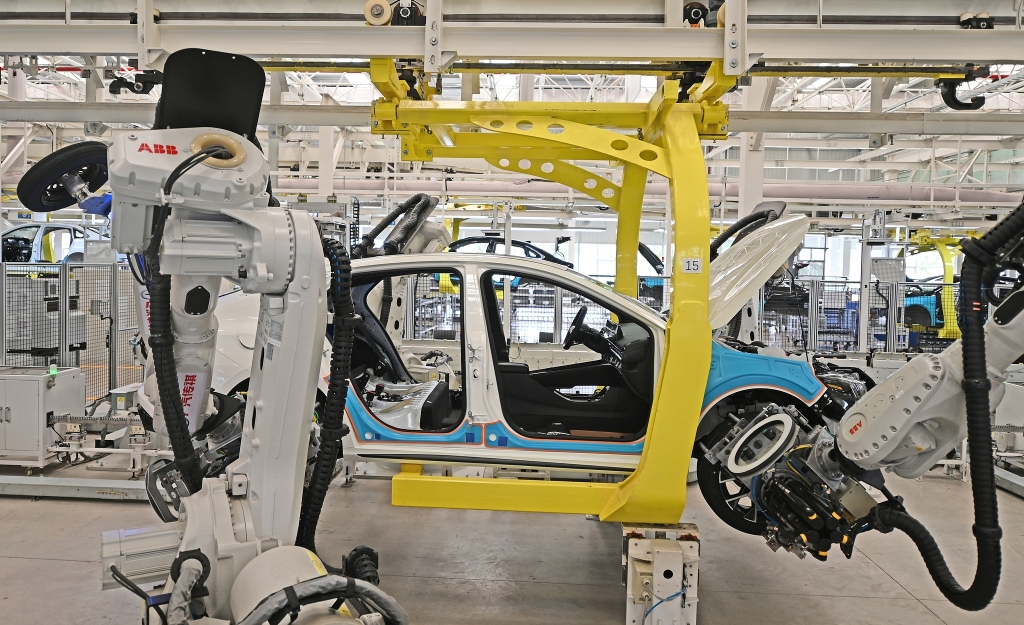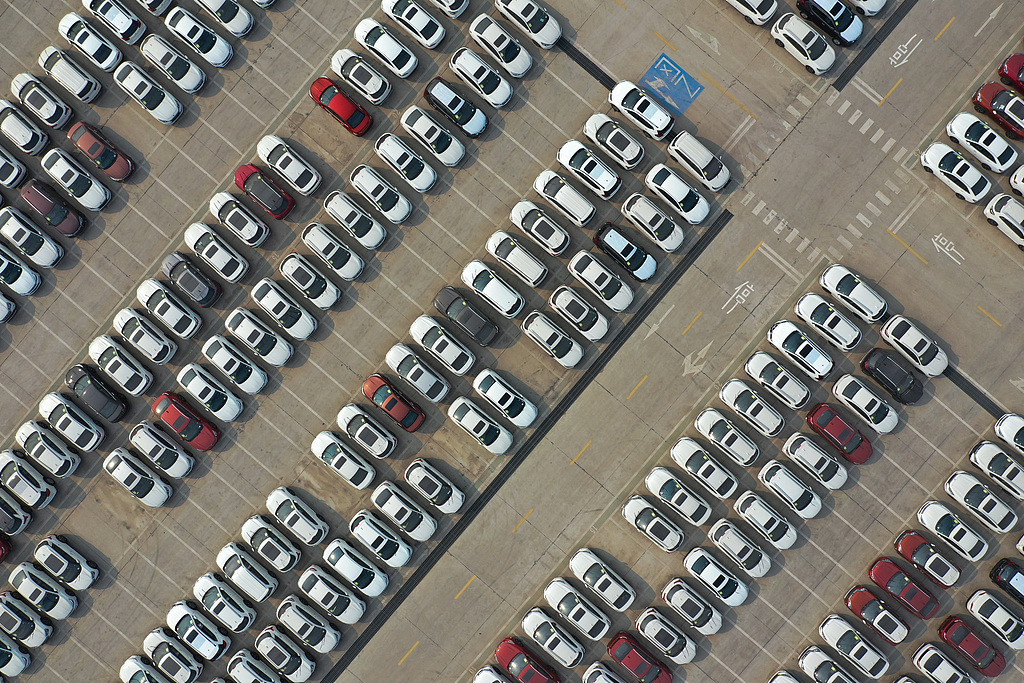
On April 10, the China Passenger Car Association released the national passenger car sales data for March, showing that in March this year, my country's narrow passenger car retail sales were 1.687 million units, a year-on-year increase of 6.0% and a month-on-month increase of 52.8%; the cumulative sales in January-March this year were 482.9 units, a year-on-year increase of 13.1%.
The China Passenger Car Association analyzed that the important reason for the year-on-year and month-on-month growth in March was the recovery of consumption after the Spring Festival. The price war after the Spring Festival quickly heated up, and a clear wait-and-see phenomenon of consumption followed. In addition, the attention to some new cars and the expectation of the old-for-new policy led to a slow start in the auto market in March.

The domestic retail share of domestic brands was 54.8% that month, a year-on-year increase of 6 percentage points; the cumulative share of domestic brands in 2024 reached 55%, an increase of 5.4 percentage points compared with the same period last year.
The share of joint venture brands was further eroded. In March, mainstream joint venture brands sold 500,000 vehicles, down 8% year-on-year and up 49% month-on-month. In March, the retail share of German brands was 20.4%, down 1.5 percentage points year-on-year, and the retail share of Japanese brands was 13.8%, down 2.2 percentage points year-on-year. The market share of American brands reached 8.2%, down 1.8 percentage points year-on-year.
In March, the retail sales of luxury cars reached 270,000 units, down 3% year-on-year and up 67% month-on-month. The retail share of luxury brands in March was 15.6%, down 1.6 percentage points year-on-year. The shortage of luxury cars that was affected by the chip supply shortage in the early stage has been greatly improved, but the market demand for traditional luxury cars is not strong. This is mainly because the product strength of Chinese smart electric vehicles with similar prices is much higher than that of luxury fuel vehicles of the same price.
In March, the production of new energy passenger vehicles reached 788,000 units, a year-on-year increase of 25.2% and a month-on-month increase of 84.9%. In March, the retail sales of new energy vehicles reached 709,000 units, a year-on-year increase of 29.5% and a month-on-month increase of 82.5%.
In March, the domestic retail penetration rate of new energy vehicles was 41.6%, an increase of 7.6 percentage points from the 34% penetration rate in the same period last year. In March, the penetration rate of new energy vehicles among domestic brands was 63.3%; the penetration rate of new energy vehicles among luxury cars was 28.4%; and the penetration rate of new energy vehicles among mainstream joint venture brands was only 7.4%.
In March, the wholesale volume of ordinary hybrid passenger cars reached 72,100 units, up 25% year-on-year and 67% month-on-month. At this year's two sessions and the Electric Hundred People Forum, representatives and experts have repeatedly suggested that the energy-saving value of ordinary hybrid vehicles based on the fuel vehicle architecture should be emphasized, and diversified energy-saving routes should be encouraged.
Although the current hybrid market is still dominated by Toyota and Toyota, there are also Chinese manufacturers gradually emerging. In March this year, GAC Toyota sold 27,458 hybrid vehicles, FAW Toyota sold 19,124, Dongfeng Honda sold 7,502, Dongfeng Motor sold 5,847, GAC Honda sold 4,928, Changan Ford sold 3,002, Geely Automobile sold 1,913, GAC Trumpchi sold 1,621, and Dongfeng Nissan sold 591. The sales of hybrid domestic brands have gradually increased.
Judging from the sales of specific manufacturers, the overall trend of strong independent brands, strong leading new forces and weak joint ventures continues.
Among the top five in terms of passenger car retail sales, three are owned by independent brands, namely BYD (No. 1), Geely (No. 3), and Changan (No. 4), and the remaining two are FAW-Volkswagen and SAIC-Volkswagen. It is worth noting that SAIC-GM has dropped from its usual top three position to No. 10 this month.
It is worth noting that Honda, which was previously strong in China, also saw a sharp decline in sales in March. In March, Guangqi Honda sold 30,118 vehicles, down 28% year-on-year; Dongfeng Honda sold 30,331 vehicles, down 24.6% year-on-year. Honda's overall sales in China were 60,449 vehicles, down 26.3% year-on-year.
As for Toyota, GAC Toyota sold 55,387 vehicles in March, a 31.9% decrease compared to the same period last year. FAW Toyota's official sales results have not yet been released, but combined with the previous monthly results and this month's ranking of the China Passenger Car Association, its performance is unlikely to improve.
In contrast, Nissan's cumulative sales in China in March were 59,914 vehicles, a year-on-year increase of 10.05%.
The China Passenger Car Association analyzed that due to a series of price reduction events of vehicle models that began after the Spring Festival this year and the new energy vehicle models that will be launched on the market from 2022 have gradually entered the stage of product modification and upgrading, this expectation has aggravated the wait-and-see mentality of consumers who hope to wait until the auto market stabilizes before buying a car.
With the recent launch of Xiaomi Motors and the further adjustment of the prices of a new round of related models, and the intensive release of new models during the Beijing Auto Show in April, the market's consumer enthusiasm will gradually be stimulated. The performance of auto show orders will be an important indicator of the market situation.


